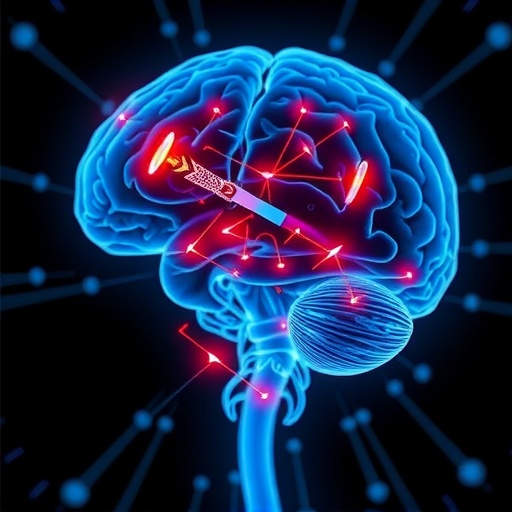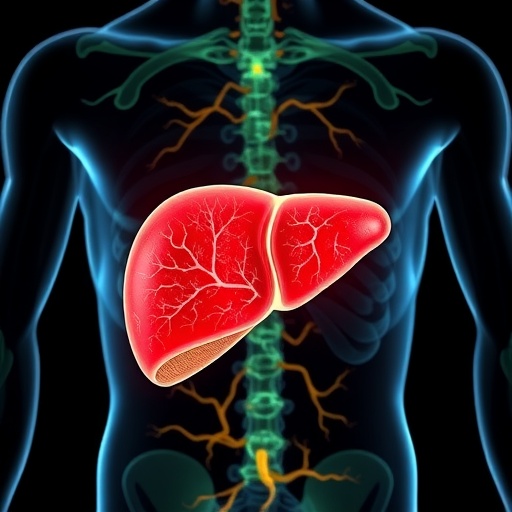
In the relentless quest to mitigate the debilitating motor symptoms of Parkinson’s disease, a transformative approach in neuromodulation has emerged, promising to elevate patient outcomes to unprecedented heights. Recent research detailed by Busch et al. in npj Parkinsonâs Disease unveils the clinical efficacy and nuanced programming paradigms of chronic adaptive deep brain stimulation (aDBS), marking a pivotal progression beyond traditional deep brain stimulation (DBS) therapies. This cutting-edge innovation harnesses real-time neural feedback, dynamically adjusting stimulation parameters to match the fluctuating neurological landscape inherent to Parkinsonâs, thereby optimizing therapeutic impact and minimizing adverse effects.
Parkinsonâs disease, a progressive neurodegenerative disorder, afflicts millions worldwide with profound motor impairments such as tremor, rigidity, bradykinesia, and postural instability. Conventional DBS, a mainstay treatment for advanced Parkinsonâs, involves the delivery of continuous electrical pulses to specific brain regionsâmost notably the subthalamic nucleus or globus pallidus internusâto disrupt pathological neuronal firing patterns. Despite notable success, standard DBS systems operate in an open-loop manner, providing fixed stimulation intensities without accommodating the dynamic and unpredictable nature of neurophysiological signals, which can vary drastically over minutes or hours depending on medication status, movement, or other external factors.
Adaptive DBS represents a paradigm shift, integrating closed-loop technology that continuously monitors biomarkers, such as beta-band oscillations in the local field potentials of targeted brain nuclei, which closely correlate with symptom severity. By leveraging these biomarkers, the aDBS system incrementally modulates stimulation in a personalized manner, effectively matching the therapeutic dose to current neural activity. This ensures that stimulation is delivered only when required, potentially reducing battery usage, prolonging device lifespan, and alleviating common stimulation-induced side effects including speech difficulties, dyskinesias, and cognitive deficits.
Busch and colleagues conducted an extensive longitudinal study evaluating the clinical outcomes and programming strategies of chronic aDBS in a cohort of patients living with Parkinsonâs disease. The study delineated a comprehensive framework for tailoring stimulation adjustments grounded in patient-specific neural metrics and symptom expressions. The researchers underscored the importance of precise parameter calibration, including amplitude thresholds, pulse width, and frequency adaptation, to strike an optimal balance between symptom suppression and preservation of quality of life.
One of the major findings reported is the substantial improvement in motor function as quantified by unified Parkinsonâs disease rating scale (UPDRS) scores, reinforcing aDBS as a superior alternative to conventional stimulation. Patients under chronic aDBS protocols exhibited marked reductions in bradykinesia and rigidity, with a notable decrease in off-medication tremor episodes. This clinical benefit was achieved alongside a reduction in overall stimulation intensity and cumulative energy delivered, reflecting not only therapeutic efficiency but also minimizing tissue exposure to electrical fields, an important consideration for long-term neural interface safety.
Programmatic flexibility is a cornerstone of the adaptive DBS modality. Unlike static programming, which often requires frequent clinical visits for adjustments, aDBS systems incorporate embedded algorithms capable of altering stimulation in near real-time based on detected neural signatures. This advances the treatment from a reactive to a proactive approach, where the system anticipates symptom fluctuations and intervenes preemptively. The study highlights strategies for establishing biomarker thresholds and hysteresis effects to optimize responsiveness, mitigating risks of overstimulation or under-treatment.
In the realm of patient experience, adaptive DBS has demonstrated considerable promise in improving overall tolerance and satisfaction. The dynamic tuning contributes to a more naturalistic modulation of motor circuits, reducing the incidence of stimulation-induced dyskinesias that can significantly impair day-to-day functioning. Importantly, chronic application under various activity statesâincluding rest, voluntary movement, and sleepâshowed remarkable stability, suggesting that aDBS can seamlessly integrate into the complexities of human neurological activity without compromising efficacy.
Technologically, the implementation of aDBS entails significant advancements in implantable device engineering. The systems require sophisticated onboard signal processing capabilities, low-latency feedback loops, and optimized power management to sustain prolonged operation within compact neural interface modules. Busch et al. elaborate on the integration of novel sensing electrodes capable of isolating local field potentials with high fidelity, as well as secure telemetry systems for remote reprogramming and data collection. These engineering feats underscore the convergence of neuroscience, bioengineering, and computational analytics in revolutionizing Parkinsonâs therapeutics.
While the promise of adaptive DBS is substantial, the research also surfaces critical challenges. Individual variability in biomarker expression demands personalized algorithms, potentially increasing the complexity of clinical deployment. Moreover, the longevity and biocompatibility of novel electrodes and signal amplification circuits remain areas requiring continued investigation. The study emphasizes the necessity of robust machine learning models for refining stimulation parameters and adapting to progressive disease trajectories, to ensure long-term efficacy.
Future directions outlined by the research team include expanding the library of measurable biomarkers beyond beta oscillations to incorporate multi-site and multimodal signals, which could enhance specificity and anticipatory control. Integration with wearable sensors and behavioral monitoring systems might further empower closed-loop platforms, yielding comprehensive neurophysiological and contextual feedback. Such advancements would allow for multifaceted intervention strategies tailored not only to motor symptoms but also to non-motor manifestations including cognitive decline and mood disorders.
The clinical deployment of chronic adaptive DBS represents a watershed moment in neuromodulation for Parkinsonâs disease, propelling the field beyond symptom palliation toward precision neuroengineering. By harmonizing neurophysiological insights with real-time computational control, this technology offers renewed hope for millions battling the relentless progression of Parkinsonâs. As data accumulate and device sophistication advances, it is conceivable that adaptive DBS platforms will become standard care, redefining therapeutic paradigms for movement disorders and potentially extending to other neuropsychiatric conditions.
In summary, the pioneering research presented provides compelling evidence that bridging biological signals and electrical stimulation through chronic adaptive DBS can dramatically reshape the management of Parkinsonâs disease. The findings advocate for widespread clinical evaluation and eventual integration into routine treatment algorithms, supported by ongoing technological refinement. This work exemplifies the transformative potential of closed-loop neurotechnology, standing at the nexus of innovation and patient-centered care.
Subject of Research: Chronic adaptive deep brain stimulation (aDBS) for Parkinsonâs disease, focusing on clinical outcomes and programming strategies.
Article Title: Chronic adaptive deep brain stimulation for Parkinsonâs disease: clinical outcomes and programming strategies.
Article References:
Busch, J.L., Kaplan, J., Behnke, J.K. et al. Chronic adaptive deep brain stimulation for Parkinsonâs disease: clinical outcomes and programming strategies. npj Parkinsons Dis. 11, 264 (2025). https://doi.org/10.1038/s41531-025-01124-7
Image Credits: AI Generated
Tags: adaptive deep brain stimulationchronic adaptive deep brain stimulationclosed-loop stimulation technologydeep brain stimulation efficacyminimizing adverse effectsmotor symptom managementneurodegenerative disordersneuromodulation advancementsoptimizing therapeutic outcomesParkinsonâs disease treatmentprogramming paradigms in DBSreal-time neural feedback




